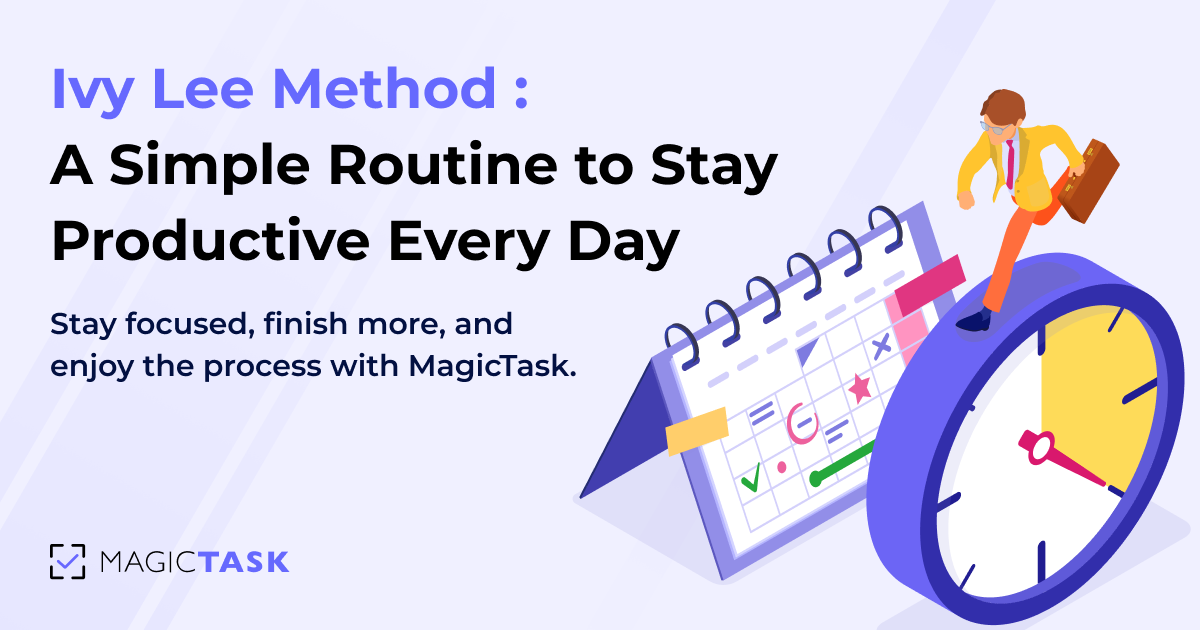Overthinking Every Task? How to Start Doing Instead of Planning

Let’s be honest, overthinking has a way of dressing itself up as productivity.
You tell yourself you’re just "getting organized" or "making a plan," but somehow, the real work keeps getting pushed to tomorrow.
I know this feeling because I’ve been there too. I used to spend hours mapping things out and convincing myself it was progress.
But after hitting that wall enough times, I realized the only way out was to start doing, even when things weren’t perfect.
If you’re caught in the same loop, I want to share what’s helped me shift from planning to taking action. No hype, just a few mindset changes and simple habits that can get you moving again, even if things still feel a bit messy.
Let's start!
Why Planning Feels Safe (But Gets You Nowhere)
Planning can feel productive. It gives you a sense of control, even when nothing’s actually moving. But often, this is avoidance in disguise.
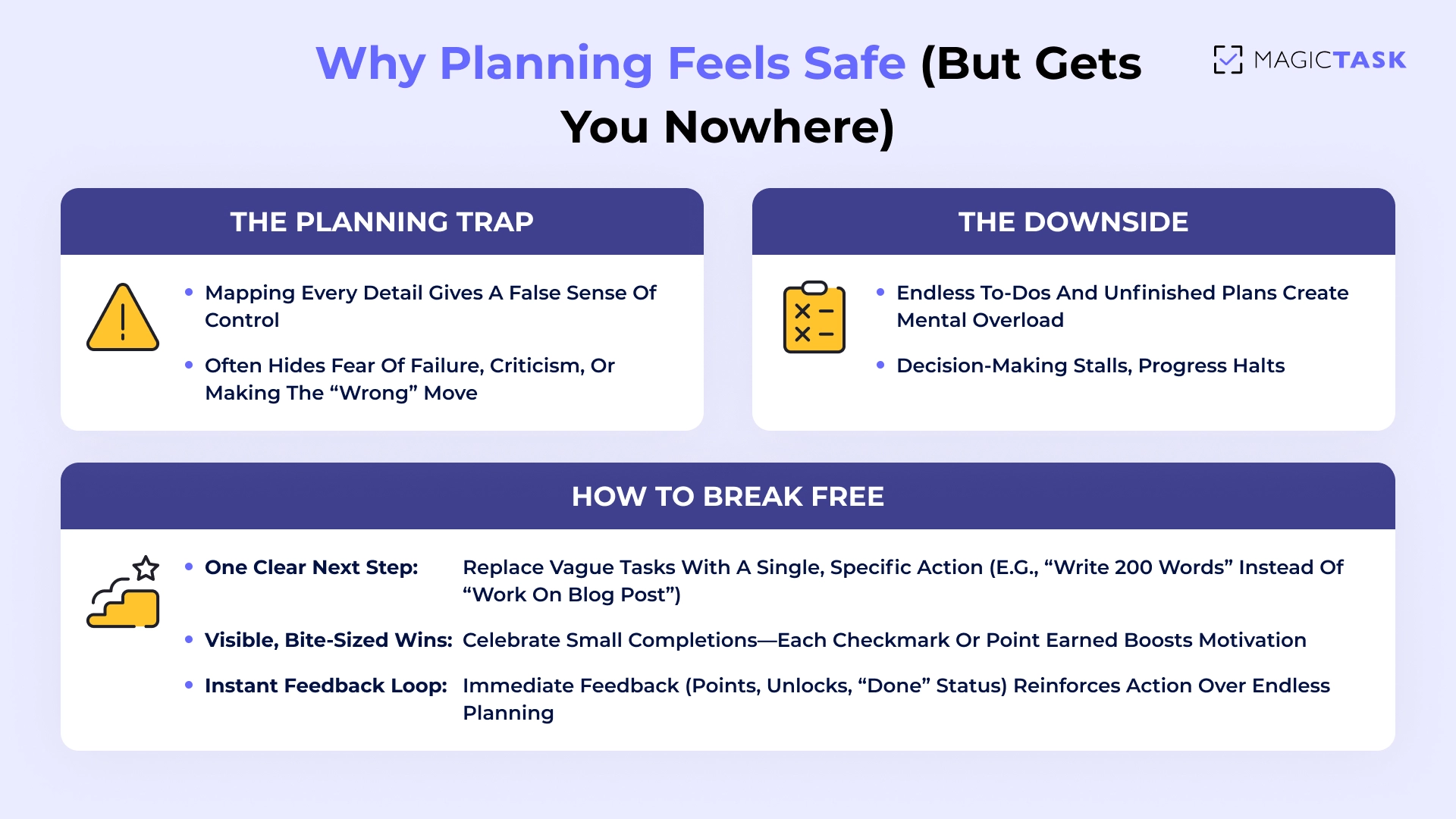
- Fear of failure is a major driver.
Studies show that people avoid beginning tasks because they fear failure, criticism, or not meeting their standards (source). When the stakes feel high, planning becomes a safety blanket, allowing us to sidestep taking action.
- Too many options paralyze action.
In the famous “Jam Experiment,” shoppers offered 24 flavors were far less likely to buy than those with only six options. Essentially, more choice equals less action.
- Decision fatigue drains your willpower.
Each choice, including planning, uses up mental energy. By the time you review plans, you may have little left for follow-through (source).
- Our “planning fallacy” misleads us.
As first identified by Kahneman and Tversky (1979), we habitually underestimate how long a task will take, even with evidence to the contrary. That unrealistic precision keeps planning longer.
All of this means planning feels productive, but often stalls progress. Awareness is the first step. Next, you need tools and approaches that break this cycle.
Signs You’re Addicted to Planning (Not Doing)
Momentum only happens when you take action. Until then, you’re just making a list of things you hope to do.
You know that feeling when you open your task board, and instead of finishing something, you spend ten minutes dragging cards around, renaming labels, and fiddling with layouts? It doesn’t feel quite right, so you keep adjusting.
Perhaps you've created intricate setups in Notion or developed comprehensive project plans in Asana.
They look great.
But nothing actually gets finished. You close your laptop feeling drained, and the real work is still sitting there, untouched.
If any of this sounds familiar, you might be stuck in planning mode. Here are a few signs:
- You reorganized your task list instead of completing one item
- You created a workflow doc, but never followed it
- You ended the day feeling busy, but made no real progress
- You tried a new app or system instead of starting the work
If you checked even one of these, you're not alone. Noticing the pattern is the first real step toward changing it.
Once you do, it's a lot easier to shift from planning to actual progress.
How to Stop Planning Everything and Actually Get Stuff Done
Now that you’ve seen how endless planning can drain your confidence, it’s time to shift your focus.
Here are four practical ways to break out of overthinking and start turning decisions into done deals.
1. Limit Planning Time
Give yourself just 15 minutes to plan your day. Set a timer, list your top priorities, and then jump straight into the first task.
The time limit matters. Without it, it’s easy to spiral into overthinking or obsess over small details. But when you know the clock is ticking, you’re more likely to make quick, confident decisions and get moving.
You don’t need a fancy system for this to work. Just a timer and a bit of structure. The goal is to keep planning short so that action takes center stage.
Pro tip: Plan at the same time and place every day. Whether it’s your desk at 8 AM or a cozy café in the evening, that consistency cues your brain to get into planning mode quickly.

Want to Become the GOAT of Productivity?
Get our free ebook Become the GOAT of Productivity and discover the tools, habits, and mindset shifts that help top performers stay focused and get more done—without burning out.
Download the Free Ebook2. Turn Projects into Clear Tasks (and Size Them)
Once you’ve got your plan, the next step is to break your big ideas into smaller actions you can actually start on.
Vague tasks like “launch campaign” leave too much to the imagination. Your brain doesn’t know where to begin, so it stalls.
Instead, write out concrete next steps. Think “write three Facebook ad headlines” or “design the homepage mockup.”
It also helps to size your tasks. Give each one a rough estimate: small, medium, large, or extra-large. You don’t need to be exact. This isn’t about micromanaging your time.
It’s simply about knowing the level of effort each task requires.
A small task might take ten minutes. Medium might need an hour. Large? Probably something you want to block time for or split up.
When you look at your list and see a mix of task sizes, you can start more easily and pace yourself without burning out.
This isn’t just a productivity trick; it’s about making the work feel real and approachable so you’re not staring at a massive wall of “someday” tasks.
3. Make Tasks Visible and Finish Them
Clarity is helpful, but it’s not enough. You also need to feel like your work is going somewhere.
Moving a task from “In Progress” to “Done” might seem small, but it creates a real sense of movement.
That visible shift gives your brain a clear reward—it shows that your effort is paying off. Without it, even the most focused day can feel strangely unfinished.
Tools like MagicTask are designed with this in mind.
They highlight one task at a time, track your progress, and reward each completion with a visual cue. You stay focused, and each checkmark becomes a small, meaningful win.
It’s not about earning points or showing off. It’s about seeing the work add up and staying motivated to keep going.
4. Use Gamified Pressure (the Good Kind)
Sometimes, knowing others can see your progress is all it takes to keep going.
Not because you’re trying to impress anyone, but because it feels good to be seen showing up and making progress.
That’s the quiet power of healthy gamification. It’s not about crushing the competition. It’s about tapping into something we all respond to: recognition, momentum, and a little bit of friendly accountability.
Research shows that light competition can improve focus and boost performance, especially when the rewards are social and encouraging, not high stakes or stressful.
MagicTask builds this into the experience. As you complete tasks, your progress becomes visible to your team. Points go up, names move on the board, and everyone gets a nudge to keep things moving. It’s not pressure to win. It’s motivation to stay in motion and help the team do the same.
How MagicTask Reinforces Action, Not Procrastination
Now that you know how to stop overplanning and start taking action, here’s how MagicTask can help you do it faster with less mental friction. It’s built to support the habits you’ve just learned so you can get moving, stay focused, and actually finish what you start.
1. Streamlined, Distraction-Free UI
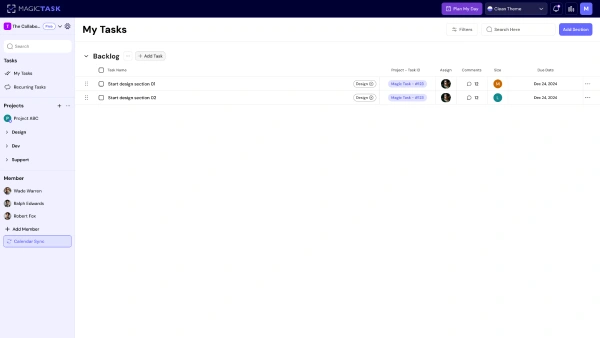
Open MagicTask, and you see only what matters now: your current focus lane.
No buried menus, no sprawling boards, just the next task, front and center.
Eliminating visual clutter means you waste zero seconds deciding where to click, and every second moves you closer to “Done.”
2. Task Sizing for Realistic Momentum
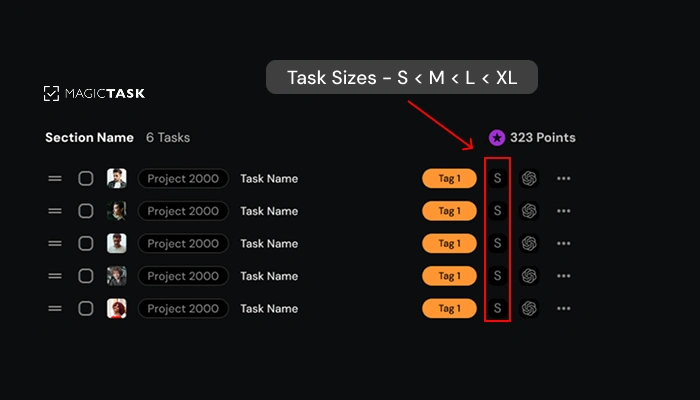
Assign each item an S, M, L, or XL tag based on complexity and time required.
This simple annotation transforms vague to-dos into concrete commitments (“M = 30–60 minutes”) so you know precisely how to batch your work and avoid overwhelm.
It’s impossible to procrastinate when the first move, “start that 15-minute small task,” feels instantly doable.
3. Instant Points & Theme Progression
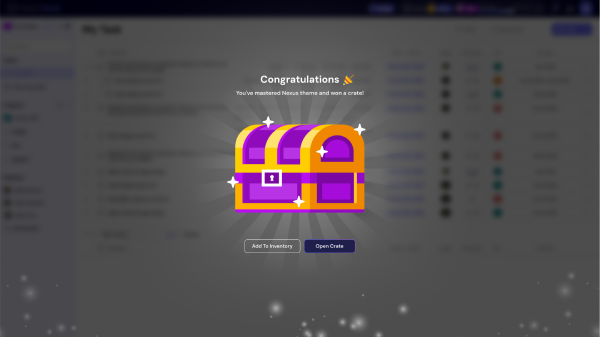
Complete a task, and MagicTask immediately deposits points into your account, while you unlock a new theme.
That double hit trains your brain to link action with reward. You’re leveling up your workspace, one small win at a time.
4. Leaderboards That Invite, Not Intimidate
Peer visibility is optional and customizable, so you can gauge your performance against teammates without toxic competition.
Watching friendly rivals rack up points can spark a healthy drive to match their pace, but because everyone opts in, it never feels like micromanagement, just shared progress in plain sight.
5. Seamless Calendar & Workflow Integrations
Connecting your time blocks in Google Calendar (feature to be added soon) means your daily intentions align perfectly with your actual work schedule.
When your calendar and task list speak the same language, you move from “I’ll get to it” to “I’m doing it,” with zero mental friction between planning and execution.
MagicTask rewires your habits so that action, not planning, becomes the path of least resistance.
If you’re ready to swap overwhelm for momentum, give it a try and watch how quickly doing becomes your new norm.
Final Thought: Progress Starts With One Small Win
You don’t need a new system. You don’t need the perfect plan.
You need one task, started and finished.
Pick something small. Size it. Do it. Then do the next one. That’s how momentum begins. Not with a strategy session, but with action.
MagicTask exists to support that shift. Not to manage your goals, but to help you meet them, one focused step at a time.
If you’re ready to feel progress instead of chasing it, now’s the time to start.

